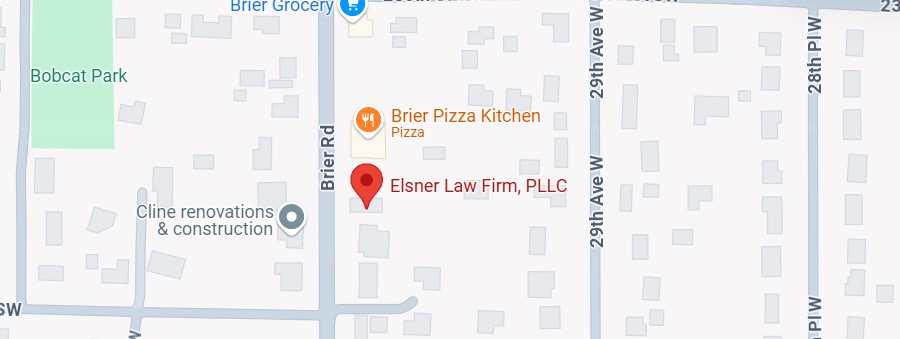As drivers, it’s our responsibility to ensure safety on the roads for everyone, including large trucks, to protect your family and loved ones. Sometimes, we may unintentionally make dangerous decisions, such as cutting off a truck. To keep yourself and others safe, it’s crucial to remember that trucks require more time and distance to slow down and come to a stop.
This blog post introduces our road program, a safety education initiative that combines research, outreach, and practical demonstrations to improve awareness about sharing the road with trucks. The program is based on research conducted by transportation safety experts and is implemented across the country to maximize its impact. Law enforcement agencies and safety organizations assist in logistics, outreach, and education efforts to ensure the program reaches as many drivers as possible.
The program is often presented in high schools and includes safety classes for teen drivers, covering information relevant to different commercial driver license class holders, such as Class A CDL drivers. We focus on five key strategies that are essential for teaching safe road sharing practices, and we hope these efforts will create safer drivers and reduce accidents nationwide.
For more information and resources on sharing the road with trucks, please visit our website.
Introduction to the Trucks Program
Sharing the road with large trucks and heavy trucks requires more than just common sense—it calls for specialized knowledge and a proactive approach to safety. That’s where the Trucks Program comes in. Developed by a dedicated team of large truck safety experts at the Virginia Tech Transportation Institute (VTTI), this safety education and outreach program is designed to help car drivers and passenger vehicles navigate the unique challenges of driving alongside large vehicles.
The Trucks Program focuses on reducing incidents involving heavy trucks and passenger vehicles by equipping drivers with practical safety tips and key strategies for safely sharing the road. Through community outreach and educational resources, the program highlights five essential strategies every driver should know: maintaining a safe following distance, being aware of large truck blind spots, passing safely and efficiently, giving trucks plenty of room for wide turns, and staying alert and focused behind the wheel. By understanding these key strategies, drivers can significantly lower their risk of being involved in a collision with a large truck.
Whether you’re a new driver or have years of experience on the highway, the Trucks Program offers valuable advice to help you drive safely and confidently around large trucks. The program’s outreach efforts, including safety classes and community events, aim to foster a better understanding of the risks and responsibilities involved in sharing the road with heavy trucks. By staying informed and following these safety tips, you can help prevent accidents, protect lives, and make the roadway a safer place for everyone.
If you or someone you know has been involved in an accident with a large truck, it’s important to seek advice from a qualified attorney who can offer a free consultation and guide you through the process of filing a claim. Prioritizing safety and education not only protects you and your loved ones but also helps reduce the financial and emotional impact of truck accidents. With the right knowledge and a commitment to safe driving, we can all play a part in making our highways safer for every driver.
Passing Trucks Safely
Passing a truck or bus is a common scenario on the road. However, it’s important to do so with caution, as passing buses and trucks presents unique challenges due to their size, wide turns, and large blind spots.
When you need to pass, make sure there is enough space. A general rule of thumb is to allow at least one car length for every 10 miles per hour you are traveling between you and the truck or bus you are passing before merging back into their lane. For example, if you’re traveling at 60 mph, aim for a minimum of six car lengths between your vehicle and the front of the truck or bus before changing lanes. Maintaining a safe distance is crucial when passing large vehicles, including buses, to prevent accidents and promote road safety.
Remember, this rule applies to all types of trucks, including those with multiple trailers. No matter the road conditions, always give yourself extra time to safely maneuver around these larger vehicles. Keep in mind that passing a truck or bus takes longer than passing a regular passenger vehicle – around three to five seconds longer. The visibility and maneuverability of large vehicles are limited, so extra caution is needed when overtaking them. Patience is key to ensuring a smooth and secure maneuver.
Motorists should always be aware of these limitations to safely drive around trucks and buses.
Tips to Pass Trucks Safely
Here are some additional tips to help you pass trucks safely:
- Allow yourself extra time and space to get around trucks.
- If you can see the entire front of the truck in your rearview mirror while passing, it’s safe to merge back into their lane.
- Avoid driving within the first 20 feet in front of a truck, as the driver may not be able to see you.
- Once you’ve completed the pass, avoid slowing down suddenly after returning to the right lane.
- Remember, trucks need more room to stop than passenger vehicles, so give them adequate space.
- Avoid distractions such as using your phone or adjusting controls, and stay alert when passing or driving near trucks and buses to enhance your reaction time and safety.
Look for Two Headlights in Your Rearview Mirror or Steer Clear
Measuring car lengths while driving can be challenging, but we have a simple rule for you. When it comes to merging in front of a semi-truck, look for both of the truck’s headlights or the full front of the truck in your rearview mirror. If you can clearly see them, it’s safe to merge in front without cutting off the truck, which is extremely dangerous for everyone involved.
The Front No-Zone: A Danger Zone to Avoid
The space directly in front of a truck is known as the front no-zone and should be avoided for two crucial reasons. First, due to the truck’s size and height, your vehicle can disappear from the truck driver’s view when entering this zone. Trucks have large blind spots in front and on the sides, making it difficult for truck drivers to see other vehicles. If you cut into the front no-zone suddenly and hit the brakes, the truck driver won’t see you, potentially causing a disastrous crash.
Secondly, trucks need ample room to brake. If you find yourself in the front no-zone and traffic comes to a sudden stop or slows down rapidly, the truck may not have enough time to stop, leading to a devastating collision. Unexpected events occur frequently on the road, such as animals crossing, debris, or other drivers cutting you off. Being in the front no-zone during these situations places you and your passengers at risk of tragedy.
To avoid potential accidents, make sure you can see the entire front of the truck cab—from the bumper to the top of the cab—in your rearview mirror before changing lanes in front of a truck. Your safety and the safety of others depend on staying out of the front no-zone.
Changing Lanes in Front of a Truck: The Importance of Patience
Under no circumstances should you ever cut in front of a truck, especially if traffic is slowing down or coming to a stop ahead. Large trucks, due to their size and weight, require much longer stopping distances than passenger vehicles. At 55 mph, it can take a large truck more than the length of a football field to come to a complete stop.
Unfortunately, statistics show that four out of every five people killed in crashes involving large trucks were occupants of other vehicles. Many fatal accidents have occurred due to unsafe driving around large trucks. By being impatient and not giving trucks enough room, you’re not only putting your life at risk but also the lives of your passengers. So please, be patient and wait for a suitable gap in traffic before changing lanes in front of a truck.
Merging in Front of a Truck: Allow Plenty of Space
Merging is another situation that can create potential conflicts between cars and trucks. Improper merging is dangerous, primarily due to the longer stopping distances required for trucks compared to passenger cars.
To ensure your safety and the safety of those around you, always give trucks plenty of time and space to maneuver safely. Avoid driving erratically around trucks and provide them with the room they need to make turns, brake, or speed up. When driving at night, avoid using bright lights or high beams behind trucks, as the glare can impair the truck driver’s vision and increase the risk of accidents. By following these guidelines, you’ll contribute to a safer, hassle-free driving experience for everyone.
When sharing the road with trucks, it’s crucial to prioritize safety and be considerate. Avoid cutting off trucks, give them enough space, and be patient. Every person on the road has a responsibility to drive safely around trucks. By following these simple guidelines, we can all contribute to safer roads and minimize the risk of accidents. If you find yourself involved in a truck accident, remember that the Elsner Law Firm is here to provide you with expert legal guidance and support. If you need assistance after a truck accident, contact us by phone or through our website for a free consultation. Stay safe and remember, accidents can happen, but with the right precautions, we can reduce their likelihood and severity.





